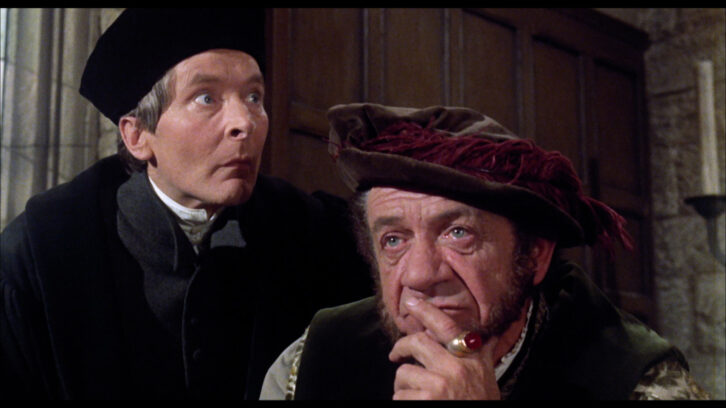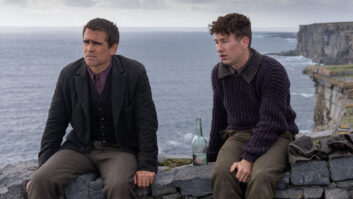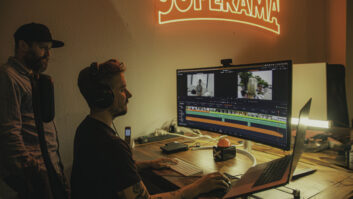There are vast libraries of unused analogue content held by global media companies. It’s such resources that ITV Content Services, based in Leeds, are saving for posterity and value with restoration tools like the Cintel Scanner G3 HDR+ and DaVinci Resolve Studio from Blackmagic Design.
Although affiliated with the ITV Content Library, which holds around 1.2 million physical assets, Content Services isn’t restricted to servicing only ITV.
“Our customers range from internal departments to companies seeking to licence our content, all the way through to external clients working on projects that have nothing to do with ITV,” says Josh Clark, content processing supervisor for ITV Content Services. “We’ve improved existing restorations for external companies and taken commissions for brand-new restorations. The demand is significant.”
Clark’s team works closely with the digitisation team responsible for film scanning, tape digitisation and transfer. “We restore, grade and master new transfers to create a new version of a classic piece of content,” Clark explains.

The team recently remastered two comedy classics to HD for the digital platform ITVX, That Riviera Touch (1966) and Carry On Henry (1971).
“In the case of That Riviera Touch, ITVX wanted to remaster it for Christmas, because there’s an association around that time of year with Morecambe & Wise,” says Clark. “That’s been the case for most restorations we’ve done; someone sees a value in the HD remaster of the film. For example, we did a lot of work for BritBox when it first launched. But we will also pick titles where we can fit them in that would be interesting to work on, such as Carry On Henry.”
Resurrecting the past
The assets used for Carry On Henry and That Riviera Touch were 35mm interpositives. These fine-grained intermediates, derived from the original film negatives, were some of the first to undergo scanning with the Cintel Scanner.
The Cintel Scanner arrived just over a year ago. “Where other scanners required regular maintenance or repairs, the Cintel has been rock-solid since we’ve acquired it,” says Clark. “Although originally intended to bridge a gap in our scanning, it has now become our go-to solution for most projects.
“The Cintel provides a solid base scan that captures rich colour details in 12-bit and overscans in 4K, offering ample resolution for UHD mastering. The automated stabilisation is also a significant advantage.”
After the initial scan, Silas Dominey took charge of film restoration using Phoenix and DaVinci Resolve Studio. Meanwhile, Sam Gilboy, the content services coordinator, was responsible for grading and mastering the films using DaVinci Resolve Studio.

Dominey explains the benefits of the Cintel’s stabilisation feature, “The [Image Mill] stabilisation tracks the film’s perforations to streamline the restoration process. If perforations are damaged, we can disable the stabilisation, giving us the ability to assess things on a reel-by-reel basis. It’s all about using the most effective stabilisation process based on the condition of the film itself.”
“We’re also impressed with the sprocket-less runner system,” adds Dominey. “Since the Cintel operates on tension, we can trust it not to damage any of the materials we process through it.”
Clark adds: “It is also equipped with a specially designed light source and a highly sensitive sensor, crucial for our restoration work. This allows us to extract a rich array of colour information from the original film, ensuring that each frame we capture is consistently detailed while providing a flat log image—a perfect starting point to take into the grade.”
“Our team can start a grade using CRIs straight out of the scanner,” he continues. “Once Silas has restored a reel, he then passes that over to me so I can replace the CRIs with the larger DPX files.”
Precise adjustments
Carry On Henry is the first time that Gilboy has graded a film in DaVinci Resolve that was scanned on the Cintel.
“DaVinci Resolve’s node base system is a breath of fresh air. It’s great to be able to separate all the adjustments that I’m making,” he says. “The White Balance Picker is so useful; it does a lot of the heavy lifting towards the start of a grade.
“The HDR grading tools let me select and isolate parts of the image and increase and decrease the threshold of what I’m working on,” he continues. “There’s quite a lot of blue in the shadows within Carry On Henry. I was able to isolate them and fight that without affecting the rest of the image.
Gilboy’s workflow also incorporated the DaVinci Resolve Mini Panel, enhancing his control during the grade. “With it, I’ve been able to fine-tune curves, switching between Lift, Gamma, Gain, and Log settings, and use the HDR wheels to isolate specific parts of the image. The panel’s layout puts all the essential shortcuts at my fingertips, making it easier to navigate between functions.”
Clark notes significant enhancements in ITV Content Services workflow following the integration of the Cintel scanner and DaVinci Resolve. “Not only have we streamlined our workflow but we’ve also elevated the speed and quality of our restorations,” he observes. “We now have more latitude to push the grade than we ever got previously, while the addition of a dedicated control surface affords us creative control over colour correction.”







